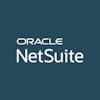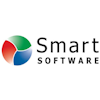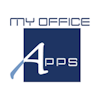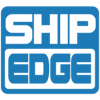App comparison
Add up to 4 apps below to see how they compare. You can also use the "Compare" buttons while browsing.
Learn why GetApp is free
Inventory Management Software

GetApp offers objective, independent research and verified user reviews. We may earn a referral fee when you visit a vendor through our links. Learn more
838 software options
Sponsored
Personalize your search
Any industry
Any business size
Netstock is not a barcoding, WMS, or inventory control solution
Reduce errors and increase in-house visibility, all the while staying mobile.
Here's what we'll cover:
- What is inventory management software?
- What are the common features of inventory management software?
- How do small and midsize businesses use inventory management software?
- What is the cost of inventory management software?
- What are the three major inventory management techniques?
- What is the difference between inventory control and inventory management?
- What are the deployment options for inventory management software?
- What are examples of advanced inventory management software configurations?
Buyers Guide
Inventory Management Software
Manufacturers need to automate their inventory management processes to effectively meet customer demand and avoid overstocking goods.
Inventory management software allows manufacturers to streamline inventory forecasting, supplier management, inventory optimization, and other key parts of the product manufacturing and distribution process. With an inventory management system, manufacturers are able to identify trends in product sales, and ultimately create a better experience for their customers.
In this guide, we'll cover:
What are the common features of inventory management software?
How do small and midsize businesses use inventory management software?
What is inventory management software?
Inventory management software monitors inventory levels to facilitate the optimal production and distribution of goods (for wholesale or retail). These applications enable organizations to efficiently manage their inventory, as well as procurement and order fulfillment. Inventory management solutions ensure accurate real-time inventory reporting and distribute this essential data across multiple locations. Inventory management software is related to inventory control software and supply chain management software.
What are the common features of inventory management software?
Inventory management: Track and manage the quantity of resources on hand to maintain proper inventory levels.
Inventory optimization: Balance and streamline inventory stock to meet customer service and revenue goals. Categorize inventory based on attributes such as item type, utility, and price range. Add custom tags to products and identify sales trends based on these tags.
Product identification: Link barcodes or serial numbers to specific items for identification.
Cost tracking: Record and monitor cost-related information for assets (e.g., budget for assets, equipment cost, revenue).
Forecasting: Form predictions based on past and present data/trends, such as what products will be needed in the future and when reorders should occur.
Inventory auditing: Leverage software support for inventory counts (stock counts and stock stakes).
Order management: Organize, track, monitor, and execute customer orders for goods, investments, and other purchases via website or in-store sales.
Reporting/analytics: Create inventory-related reports and analyze real-time inventory metrics such as stock levels, costs, profit, and utilization rates.
Search/filter: Search and filter through available resources to locate inventory-related information.
Shipping management: Organize and track delivery orders.
Supplier management: Manage various aspects of your supplier relationships, such as autofilling purchase orders, storing supplier details, tracking transaction histories, and supplier discounts.
How do small and midsize businesses use inventory management software?
Small and midsize businesses (SMBs) use inventory management software to help manage and optimize their supply chains. With an inventory management solution, SMBs can ensure that they have the correct amount of inventory in stock at the appropriate locations.
This helps small and midsize manufacturers meet customer demand and establish good working relationships with suppliers and retailers. Typically, SMBs have a limited amount of resources to work with, making it even more crucial for manufacturers to make well-informed decisions regarding product development and distribution efforts.
Inventory management systems can help these businesses drive down inventory costs while meeting production requirements.
What is the cost of inventory management software?
Most products in this market are priced on a per user, per month basis, billed annually. Pricing can be divided into three pricing tiers based on the starting prices:
Price ranges:
$24 - $38
$38- $91
$91+
*The pricing included is for the entry-level/lowest-priced offering found on vendor websites on April 19, 2022. These ranges correspond to the 25th, 75th, and 100th percentiles of pricing information gathered from vendor websites of sample products.
What are the three major inventory management techniques?
Although there are a wide variety of inventory management techniques, there are three primary techniques that manufacturers commonly use to streamline the inventory management process and save money:
Just in time (JIT) delivery: In this technique, customers place an order with a manufacturer, and then the manufacturer places an order with their suppliers. Once these suppliers receive the order, they supply the manufacturer with the materials needed to fulfill the customerʻs order. In other words: manufacturers only receive goods as needed for their production process. This technique can reduce inventory holding costs and decrease storage space requirements for manufacturers.
Push strategy: Manufacturers that use this technique order inventory based on customer demand forecasts. The goal of this strategy is to move accumulated products into the marketplace, reducing the risk of product damage during storage and reducing costs associated with product overstocking.
Pull strategy: With the pull strategy inventory management technique, manufacturers order small amounts of inventory in response to customer demand. This eliminates the need to forecast customer orders, and can minimize the risk of product waste and save money that would be otherwise spent on warehousing costs.
What is the difference between inventory control and inventory management?
Although inventory control and inventory management are both important parts of the goods manufacturing and distribution process, they have key differences.
Inventory management is the process of forecasting and replenishing inventory, whereas inventory control is a method specifically used to regulate the inventory levels within a companyʻs warehouse.
In other words, the scope of inventory control is much smaller than inventory management since the latter includes maintaining supplier relationships and responding to customer demand. Inventory control mainly focuses on how many products are being stocked and whether or not the goods are in usable condition.
What are the deployment options for inventory management software?
Cloud-based deployment: These solutions are hosted on the software vendor’s servers. Users are provided with individual accounts, which they can access by signing in from a web browser or mobile app. Cloud-based systems are usually priced on a per user, per month basis.
On-premise deployment: On-premise systems are hosted on a business’ own servers. These systems have one-time per user license fees and upgrade costs. You’ll also often need to purchase servers and network equipment.
What are examples of advanced inventory management software configurations?
While the common features listed above are core to a manufacturer's essential business needs, it can be helpful to know about the advanced features offered by some inventory management software.
Some of these features could be important for your needs, based on your business type, size, and requirements.
Warehouse management: Fulfill warehouse operations such as designating inventory location, searching for an item or batch, and tracking inventory movement.
Barcoding and RFID: Add barcodes and RFID tags to your inventory to track the real-time location and movement of physical inventory.
Supplier management: Track the real-time status of inventory procured from third-party vendors.
Reorder management: Calculate critical stock levels and reorder points based on historical trends. Receive alerts as soon as stock dips below a reorder point.
Multichannel management: Manage inventory for multiple sales channels such as physical store sales, online sales, and distribution network sales. View stock levels in real time as soon as a purchase is made through any of these channels.
Sources
Products evaluated for the pricing calculation were taken from GetApp’s inventory management software Category Leaders report. The pricing ranges exclude freemium versions of the products. The features highlighted were identified based on their relevance and the percentage of products in GetApp’s directory that offer them.
Back to inventory management software directory
*Note: The applications selected in this article are examples to show a feature in context, and are not intended as endorsements or recommendations, obtained from sources believed to be reliable at the time of publication.
























